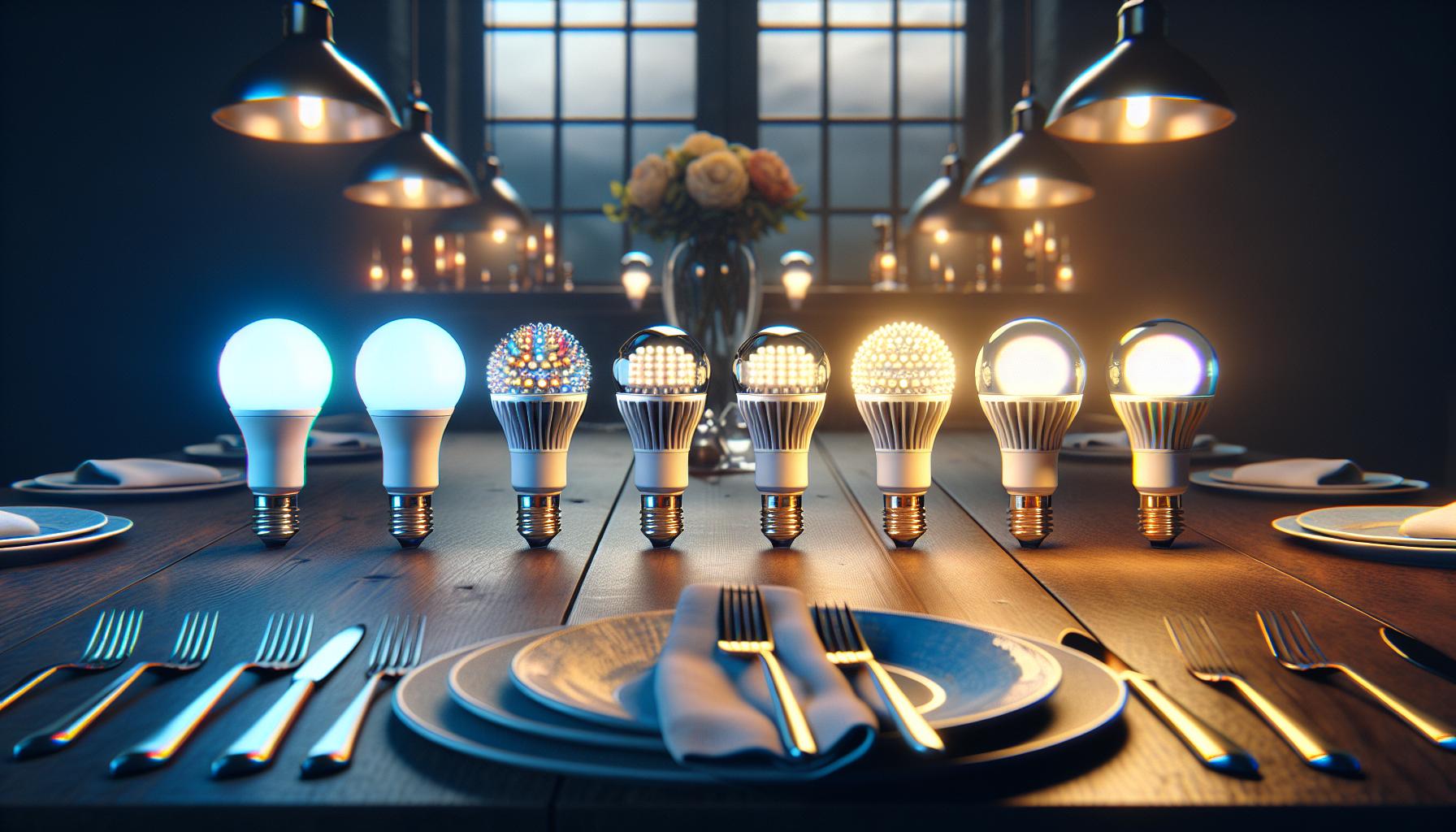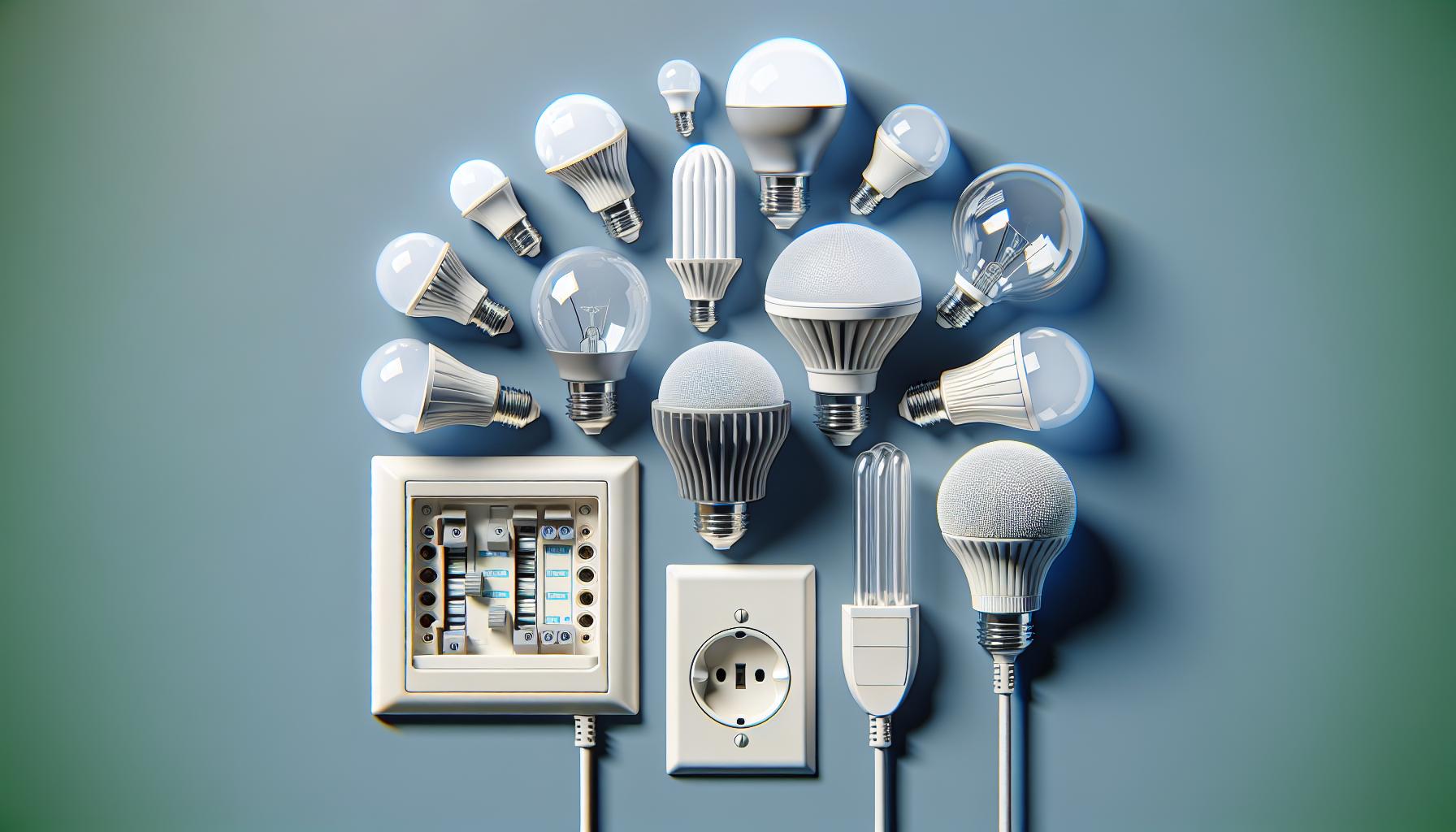When you switched to LED light bulbs, you were probably sold on their energy efficiency and long life span. But like any tech, they’re not perfect. You’ve likely noticed a few quirks and may wonder if it’s just you or if there’s a bigger picture you’re not seeing.

From flickering issues to a less cozy glow, LED bulbs can sometimes leave you in the dark about their shortcomings. Let’s shed some light on what’s going wrong with these bulbs and why they might not always be the bright choice you thought they were.
Flickering Issues
One of the most common and annoying problems you may encounter with LEDs is flickering. This isn’t just a minor nuisance; it can cause eye strain and headaches in sensitive individuals. But what exactly is behind this flickering phenomenon?
Firstly, it’s essential to understand that LEDs operate on direct current (DC), and when your home’s alternating current (AC) isn’t converted properly, it can lead to an uneven power supply to the bulb. This mismatch often causes a rapid on-and-off cycle that your eye perceives as flickering.
- Incompatible dimmer switches are frequent culprits.
- Fluctuations in your home’s voltage could also contribute.
Moreover, the internal components of the LED bulb, like the driver designed to regulate the power, can be of poor quality or fail, leading to this strobe effect. It’s not just the components inside the bulb; the overall design plays a role. Manufacturers cutting corners for cost-saving can produce bulbs more prone to flickering.
For those of you with a keen eye for DIY fixes, it’s worth noting that sometimes the solution can be as simple as ensuring a tight connection in the light fixture or replacing a faulty switch. On the other hand, if you’re dealing with low-quality bulbs, consider investing in reputable brands known for their solid manufacturing standards.
Remember, while the upfront cost might be higher, spending a little extra on quality LEDs can save you from the headache-inducing flicker and the need for frequent replacements. Keep an eye out for bulbs with a high flicker index, and always check for compatibility with your current fixtures and dimmers before purchasing new LED lights for your home lighting projects.
Less Cozy Glow
When you’re nestled in for a cozy evening, the warmth of the light around you can make all the difference. Traditional incandescent bulbs are renowned for their soft, warm light, which creates that inviting, snug atmosphere. By contrast, LED light bulbs have frequently been criticized for emitting a less cozy, more clinical type of light.
The main reason behind this is the color temperature of the light. Measured in Kelvins, color temperature refers to how warm or cool the light appears. Incandescents typically shine at around 2700K, a warm yellowish-white light, similar to the glow of a sunset. However, many LED bulbs have a higher Kelvin rating, often above 3000K. This produces a cleaner and more daylight-like color, which can feel less relaxing in residential settings.
Another aspect is the CRI – or Color Rendering Index – which is a measure of how accurately a light source reveals the true colors of objects compared to an ideal or natural light source. The higher the CRI, the more vibrant and true the colors in your home will look. Incandescent bulbs generally have a CRI around 100, which is the highest possible score, while LEDs may score slightly less. Although the difference might not be stark, it contributes subtly to the overall feel of your space.
But don’t fret – advances in LED technology have given rise to “warm” LEDs that mimic the cozy glow of the incandescents you love. They’re available in lower Kelvin temperatures around 2200K to 2700K and have been engineered to offer a CRI closer to incandescent bulbs.
Moreover, you can now find LED bulbs in a wide range of color temperatures and CRIs, which means you can personalize the ambiance of your home to match your taste and mood:
- Warm White (2700K) for a soft, relaxing feel
- Cool White (3000K–4000K) for a crisp, alert atmosphere
- Daylight (5000K–6500K) for the brightest, most invigorating light
Remember, while the cold, sometimes harsh light of early LED bulbs is still fresh in memory, you’ve got more options today. With strategically chosen LED bulbs, you can effortlessly create whatever vibe you’re aiming for in your home sans sacrificing the energy efficiency and longevity LED lighting provides.
Harsh White Light
« Should Light Bulbs Explode? 8 Crucial Tips to Prevent Dangerous Mishaps
Do You Need a Special Dimmer Switch for LED Light Bulbs? Find Out Now »
If you’ve ever stepped into a room bathed in LED light and felt like you were in an operating room rather than your living room, you’re not alone. This stark, harsh white light can often make home spaces feel less welcoming. But what exactly causes this?
Color temperature plays a critical role in the perception of light. Measured in Kelvin (K), a lower color temperature means the light appears warmer, similar to the soft glow of sunrise or sunset. Higher temperatures, on the other hand, create a cooler, more clinical light. Many LED bulbs are on the cooler side, coming in at above 4000K, giving that intense, stark white light that can be less inviting.
Warm LEDs aim to replicate the comforting, amber tones of incandescent bulbs, typically sitting around 2700K to 3000K. These are your go-to’s for a cozy atmosphere, but it’s not uncommon to pick up an LED bulb that looks warm on the packaging, yet casts a cooler light once illuminated.
Color Rendering Index (CRI) is another vital aspect. It’s a measure of how accurately a light source displays colors as compared to daylight. When the CRI is lower, some colors might look washed out or different than they truly are, contributing to an unappealing ambiance. For the most natural light, you’ll want LEDs with a CRI of 80 or higher.
It’s crucial to check the packaging for these indicators to ensure you’re getting the warm, life-like lighting you desire. Also, keep in mind the specific purpose of the room. For instance, you might prefer a cooler light in a home office for function and focus, while the living room or bedroom beckons for the warmth and relaxation of lower Kelvin bulbs.
Shopping for LEDs, you might also encounter the term “daylight” on labels. While it might sound appealing, daylight bulbs can often verge towards a bluer hue – a far cry from the warm incandescence you might be seeking.
Remember, lighting can dramatically alter the mood and functionality of a space. Finding the right LED bulbs is about balancing between energy efficiency and fostering a welcoming environment. So go ahead, fine-tune your light fixtures and relish in the perfect ambiance they can create.
Compatibility Problems
When you’re knee-deep in a DIY project, eager to revel in the energy efficiency of your new LED light bulbs, compatibility issues can put a frustrating twist in your plans. Unlike traditional bulbs, LEDs operate using a low voltage, which means they’re often incompatible with older dimming switches. These switches are designed for the higher electrical loads of incandescent bulbs, so they may struggle to modulate the output of LEDs, leading to flickering or a failure to dim altogether.
Moreover, you may find that some LED bulbs interfere with radio or TV signals due to electromagnetic interference (EMI). While not a common problem, it’s something to bear in mind if you suddenly notice static or disruption when you flip the light switch.
Another compatibility issue comes into play with enclosed fixtures. Since LEDs produce less heat than incandescents, they’re often mistakenly thought to work well in any setting. However, LEDs do generate heat at the base, which needs proper ventilation to dissipate. Enclosed fixtures without adequate airflow can lead to overheated LEDs, significantly shortening their lifespan.
Here’s a quick breakdown of common compatibility issues:
- Dimmer Compatibility: Can lead to flickering or inability to dim
- EMI Disruption: Could interfere with radio or TV signals
- Enclosed Fixtures: Inadequate ventilation may lead to overheating
To avoid these headaches, check your current fixtures and switches before making the switch to LED. Manufacturers now offer LED-compatible dimmers, and there are LEDs available with built-in filters to minimize EMI. For enclosed fixtures, search for LEDs specifically designed for that purpose.
For those rooms where ambiance is key, opt for LEDs compatible with phase-cut dimmers. These are engineered to handle the lower electrical load from LEDs while providing smooth dimming capabilities—ensuring your lighting is never too bright or too dull. Always remember, the right LED for the right situation isn’t just about light quality—it’s about ensuring the longevity and functionality of your lighting solutions.
Conclusion
You’ve seen that while LED light bulbs offer energy efficiency and longevity, they’re not without their quirks. Remember to double-check your fixtures and switches to avoid any compatibility issues. Opt for LEDs that are designed for your specific situation, particularly when dealing with dimmers or enclosed fixtures. By doing so, you’ll ensure that your LED bulbs perform at their best, saving you both energy and frustration. Happy lighting!
Frequently Asked Questions
What are the main compatibility issues with LED light bulbs?
LED light bulbs may face issues with dimming switches, electromagnetic interference, and overheating, especially in enclosed fixtures. These issues can affect their functionality and longevity.
Can I use my current dimming switches with LED light bulbs?
It’s advisable to use LED-compatible dimmers to prevent issues with dimming and to ensure optimal performance. Standard dimming switches might not work correctly with LED bulbs.
What is electromagnetic interference and how does it relate to LEDs?
Electromagnetic interference (EMI) can disrupt electronic devices and is sometimes caused by LED light bulbs. Choosing LEDs with proper shielding can help reduce EMI.
Can LED light bulbs overheat in enclosed fixtures?
Yes, LED bulbs can overheat in enclosed fixtures if they’re not designed for that specific use. Overheating can shorten the lifespan of the LEDs, so it’s recommended to use LED bulbs that are suited for enclosed fixtures.
How can I ensure the longevity of my LED light bulbs?
To ensure the longevity of LED light bulbs, choose the correct bulbs for your fixtures, use LED-compatible dimmers, and opt for LEDs designed for specific scenarios like enclosed fixtures.



